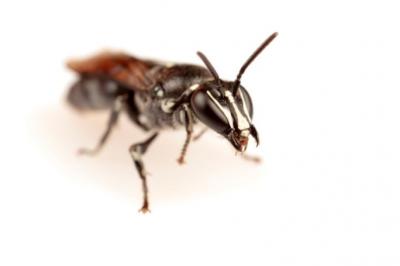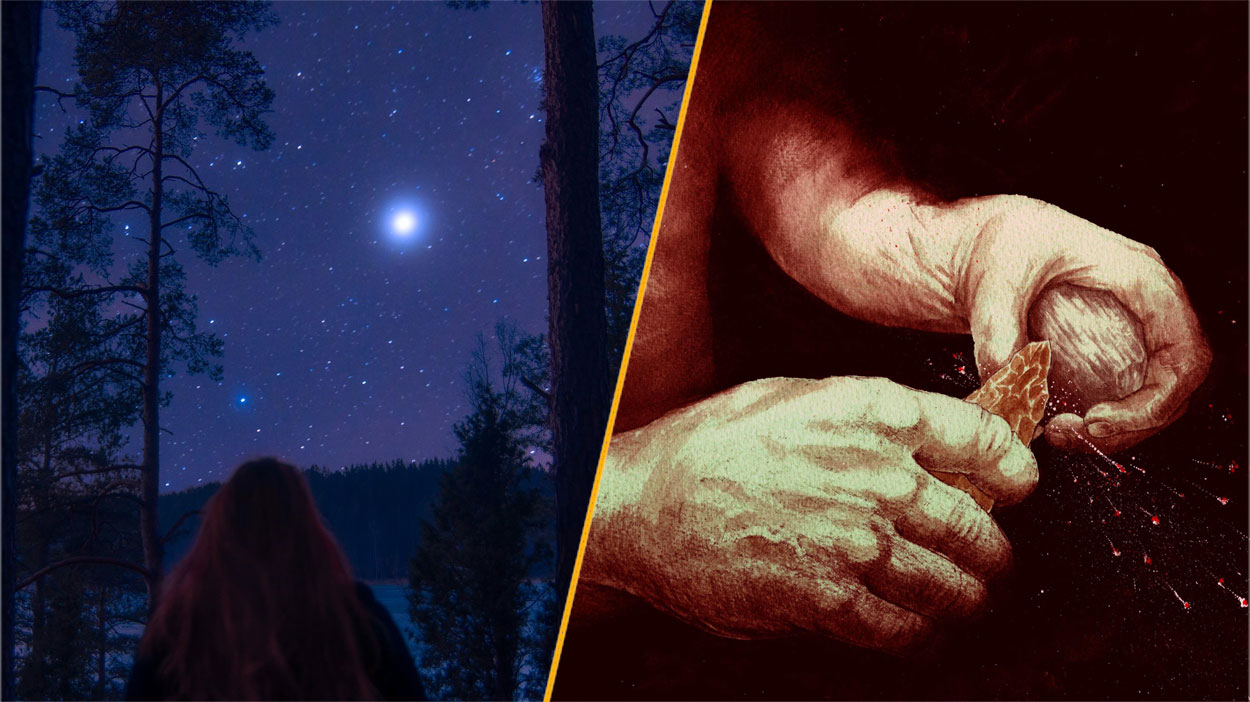Rare Australian bee rediscovered after nearly a century
It hadn't been seen since 1923 and was thought to be extinct.

An extremely rare species of bee that hasn't been seen for nearly a century and was thought to be extinct has been rediscovered by a lone researcher in Australia.
This rare "masked" bee, known as Pharohylaeus lactiferus, is native to Australia and is the only species in the genus Pharohylaeus. It is similar in size to the invasive European honeybee (Apis mellifera). Only six individuals have been previously identified in Australia and the last one was reported in 1923.
But the bee was recently rediscovered by James Dorey, a doctoral candidate at Flinders University, while completing fieldwork in the state of Queensland. After the chance rediscovery, Dorey conducted a larger survey of Queensland and New South Wales dedicated to searching for P. lactiferus.
Related: Gorgeous images of Australian 'rainbow' bees will blow your mind
"I never really expected to find any," Dorey told Live Science. "But we have caught many times more bees now than we did back then."
His research on the bees suggests that deforestation and forest fires could be putting them at risk of extinction, for good this time.
Searching for bees
The rediscovery of P. lactiferus was a lucky accident for Dorey.
Get the world’s most fascinating discoveries delivered straight to your inbox.
"Knowing that P. lactiferus hadn't been found for so long meant that I was keeping an eye open for it as I sampled my way up the coast," Dorey said. "Once I managed to find the first specimen I had a place to start and the opportunity to look for more."
After the discovery Dorey spent five months surveying 245 sites across Queensland and New South Wales in search for more of the masked bees. Dorey focused his efforts on certain flowering plants that were similar to those where he found the first individual. The sampling involved a combination of both watching flowers to see if the bees visited them and "general sweeps" with a butterfly net above the flowers.

The survey revealed three geographically isolated populations of the masked bees across Australia's eastern coast. Each population lives in patches of tropical and subtropical rainforest with a specific vegetation type. Dorey thinks that the bees are particularly dependent on firewheel trees (Stenocarpus sinuatus) and Illawarra flame trees (Brachychiton acerifolius).
Under threat
The survey has identified more individuals of P. lactiferus than ever before. But due to poor historic records there is no way of knowing if the masked bee populations have increased or decreased over time, according to Dorey.
Although the bees' may live in isolated populations because they strongly prefer certain habitats, Dorey also suspects that deforestation and increasingly severe and numerous wildfires could also be playing a role in their isolation.
"Where these bees have been found, that rainforest type has undergone habitat destruction and fragmentation," Dorey said. "This means that there is less of this habitat available," and that makes it "harder for [the bees] to move between what's left."
Unfortunately, rising temperatures caused by climate change will only worsen wildfires, and deforestation is only continuing, which means "these potential threats are likely to get worse," Dorey said.
"Smaller, and lower-quality fragments might make it more likely that P. lactiferus will go extinct in each fragment, and less likely that it will be able to recolonize from another," Dorey said.
Therefore, protecting these habitat fragments is key to their survival.
However, protecting species is impossible without tracking the bees' numbers as well as changes in their habitats.
"Without it we have no idea what's going on in ecosystems," Dorey said. "If we did not go and look, then species declines would certainly go unnoticed and the protection of species would be impossible."
The study was published online Feb. 25 in the Journal of Hymenoptera Research.
Originally published on Live Science.

Harry is a U.K.-based senior staff writer at Live Science. He studied marine biology at the University of Exeter before training to become a journalist. He covers a wide range of topics including space exploration, planetary science, space weather, climate change, animal behavior and paleontology. His recent work on the solar maximum won "best space submission" at the 2024 Aerospace Media Awards and was shortlisted in the "top scoop" category at the NCTJ Awards for Excellence in 2023. He also writes Live Science's weekly Earth from space series.


